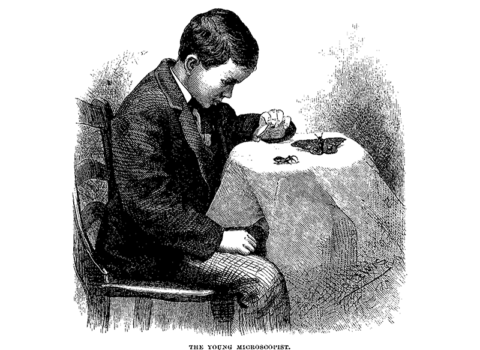Biden Turns Trumpist on Tariffs
One of my biggest challenges as a critic of free trade and its destructive force on the United States is countering the unwillingness or inability of the media to understand import tariffs. The subject of trade itself has a tendency to mystify ordinary citizens, which is likely why editors at newspapers, magazines, and television stations have little interest in dedicating precious time or space to analyzing the sometimes murky details of international commercial relations. Talking on air about raising tariffs on Chinese imports is a good way to lower ratings and dampen the mood.
Nevertheless, it’s worth noting the consequences and political contradictions of the matter. Last month, when I read the Wall Street Journal’s front-page article announcing that the Biden Administration was extending Trump-era import tariffs on Chinese products, I almost fell out of my chair. Hadn’t Trump’s opponents, Democrats and Republicans alike, declared that imposing heavy duties on roughly half of Chinese products had been one of Trump’s worst mistakes? Hadn’t the media and Biden’s Democratic Party been among the loudest critics of an import tariff, decrying the so-called stupidity of a crude president’s ultranationalist advisers? “This American carnage stops right here and stops right now,” Trump asserted in his bellicose inauguration speech, which was widely ridiculed. He was, in part, talking about the fall of America’s industrial heartland and the abandoned factories across the country—results of a bipartisan politics of “free trade.” Trump owed his victory to the voters of the Rust Belt, especially in Wisconsin, Michigan, and Pennsylvania, and wanted to acknowledge them.
But Biden, formerly a follower of the free-trade consensus, is now adopting what is basically a Trumpist policy. His trade representative, Katherine Tai, like Trump, has invited American companies to apply for exemptions on the tariffs, currently up to 25 percent, on Chinese goods. Nevertheless, Tai has in effect become a spokesperson for the Trump line. Greg Ip, of the Wall Street Journal, explains that this “fatalist” view reflects the “popular school of thought in the Trump administration and among some in Biden’s orbit: the engagement [with China] has always been doomed because China has never believed in the world order championed by the United States and other market-oriented democracies.” Currently, the leader of these fatalists is a man named Rush Doshi, a member of the National Security Council and the author of The Long Game: China’s Grand Strategy to Displace American Order. This title is not as blunt as Death by China: Confronting the Dragon—A Global Call to Action, a pugnacious work by Peter Navarro, an economist and adviser to president Trump, but Doshi’s conclusions are not all that different from Navarro’s. Not long ago, right-minded adherents to classical liberalism, who tend to denounce anything protectionist, had considered Navarro to be a marginal, even unhinged character.
How to explain the Democrats’ sudden switch from free-trade dogma to free-trade restrictions? On the one hand, it’s due to the end of Bill Clinton’s reign over the Democratic Party that collapsed after Hillary’s defeat in the 2016 presidential election. In 2000, then President Clinton approved Permanent Normal Trade Relations with China, allowing the communist giant to become part of the World Trade Organization and subsequently triggering an avalanche of investments and outsourcing from the United States to the Pearl River delta. American capitalists have always known that Beijing is insincere in its respect for the free market, but this has not deterred them. What had attracted Clinton’s interest was the enthusiasm of his biggest Wall Street donors and of the majority of American manufacturers, all of who saw the benefit of exploiting cheap labor that was strictly controlled by an authoritarian government that did not tolerate strikes or dissent. We knew exactly what we were getting. The Chinese deal of 2000—a real miracle of “free trade” and a testament to Bill Clinton’s skills as a salesman—soon replaced unionized sites in the Midwest with a new concentration of low-cost factories. That China is constantly violating WTO regulations (concerning subsidies, intellectual properties, sharing of technology, etc) means little to the barons of American capitalism. After all, Chinese workers earn an average of $5.29 an hour in “urban non-private” factories and $3.30 in “urban private” factories, whereas their American counterparts earn $30.30.
On the other hand—and more politically risky for the Democrats—there is the fact that Trump and his trade representative, Robert Lighthizer, were definitely right about applying steep tariffs on imported steel. Proof does not come from Peter Navarro but from the New York Times, a loyal promoter of free-trade doctrine as well as Trump’s archenemy. On May 21, the newspaper of record published a front-page article on the steel industry’s spectacular comeback in the United States: “Prices, Demand and Hiring Soar: Steel Is Back.” The subtitle specified: “A rebounding economy and Trump-era tariffs have helped drive the price of domestic steel to record highs.”
And if the Trump nightmare returns in 2024? Are we going to say he was wrong about import tariffs?



